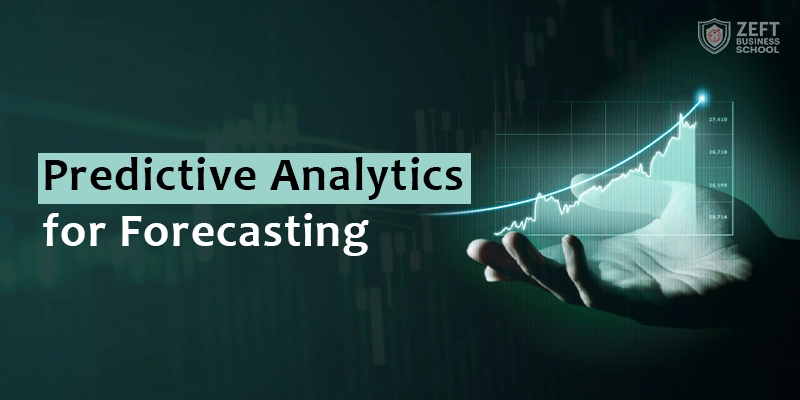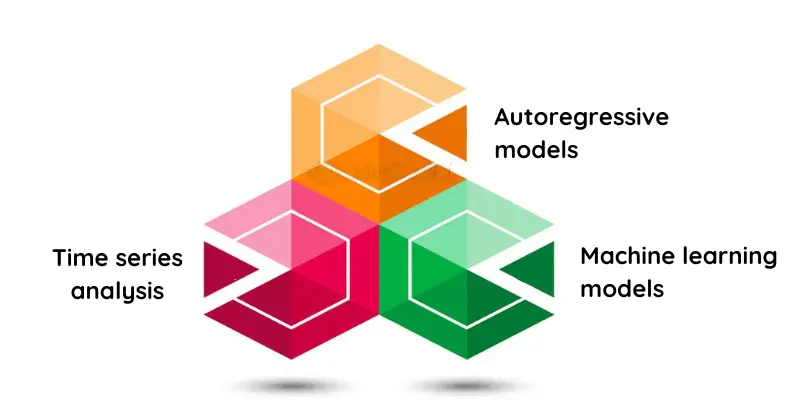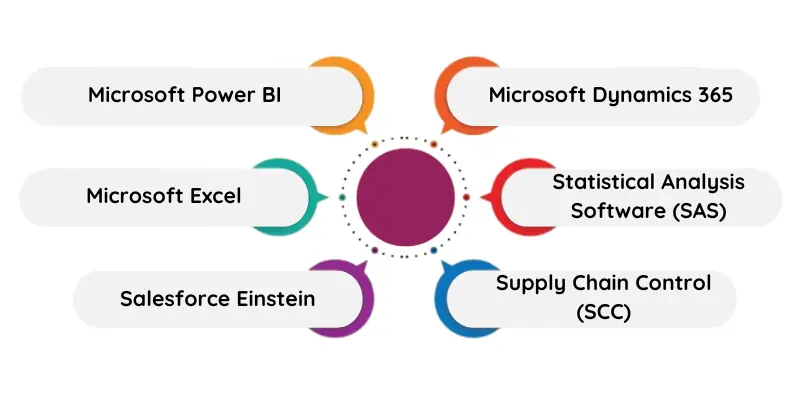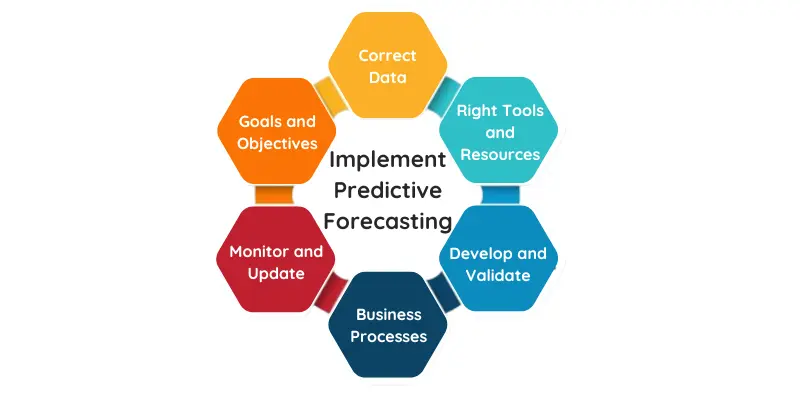Businesses in this contemporary, data-driven world face constant threats. But what separates successful businesses is their ability to use that information and transform it into actionable insights. This is where predictive forecasting comes in. Through this blog, we will explore predictive forecasting, its models, forecasting vs predictive analytics and their benefits.
What is Predictive Forecasting?
Predictive forecasting is an effective approach for gauging future trends using historical data and statistical evaluation. It is even more effective than traditional forecasting methods that don’t go beyond current trends into the future. Predictive forecasting, then, uses state-of-the-art models to uncover hidden patterns in your data. By figuring out these connections, predictive forecasting allows for precise and insightful predictions of what’s about to come.
Traditional forecasting is like looking into your car’s rear view mirror. It reports where you have been so that you can be careful while driving. Predictive forecasting is like a set of headlights. It indicates the road ahead, allowing you to drive with clarity. This approach allows groups to make proactive decisions rather than simply reacting to market changes. Here’s how:
Predictive Analytics for Forecasting
Predictive analytics is the foundation of predictive forecasting. It involves analysing large databases to uncover hidden trends, correlations, and patterns. These insights are then used to develop predictive forecasting models that can anticipate future events with greater accuracy.
Predictive Analytics for Sales Forecasting
To project future sales data, predictive sales forecasting makes use of market trends, customer behavior patterns, and sales data. This helps companies in maximizing inventory levels, allocating resources wisely, and customizing advertising campaigns for the best result.
Predictive Analytics for Demand Forecasting
Demand forecasting, like sales forecasting, anticipates future product or service demand. This enables businesses to plan production schedules, manage inventory more efficiently, and avoid stock outs or excess inventory, which can reduce revenues.
Predictive Forecasting Models
Predictive forecasting models are the heart of this process. These models are statistical algorithms trained on historical data to learn patterns and relationships. Common models include:
Autoregressive models
These models predict values based on past observations.
Time series analysis
This technique forecasts future values by analyzing trends and variations within a time series dataset.
Machine learning models
Regression analysis and decision trees that can be used to create complex models that capture relationships within data.
Forecasting vs. Predictive Analytics
While often used interchangeably, there’s a small difference. Forecasting uses historical data to anticipate future trends, whereas predictive analytics delves deeper, uncovering the “why” behind those trends. This lets us make accurate predictions and better decisions.
Benefits of Predictive Analytics
The benefits of integrating predictive forecasting into your business strategy are numerous:
Improved Decision-Making
Predictive models provide data-driven insights that help firms make informed decisions across departments, including marketing, sales, production, and finance.
Enhanced Profitability
Businesses that can properly estimate demand and sales can improve inventory levels, decrease expenses, and maximize income prospects.
Reduced Risk
Predictive forecasting identifies possible hazards before they occur, helping businesses to take proactive steps to mitigate risk and ensure smooth operations.
Increased Customer Satisfaction
Businesses that anticipate client requirements and behaviors can personalize marketing campaigns, improve product offerings, and provide exceptional customer service.
A strong foundation in business acumen is valuable for leveraging the power of predictive analytics. B Schools in Chennai, known for their focus on data science and analytics, can equip aspiring business professionals with the necessary quantitative skills and knowledge to excel in this field.
Predictive Forecasting Tools
Predictive forecasting tools facilitate the creation and utilisation of these models. Some popular options include:
Microsoft Power BI
Predictive forecasting in Power BI streamlines the process of predicting future trends. Users can leverage the platform’s built-in functionalities to generate and visualise forecasts directly within their reports. This improves the workflow and allows data analysts to acquire significant insights without requiring extensive technical knowledge.
Microsoft Excel
Microsoft Excel provides basic predictive forecasting features like trendlines and exponential smoothing, though it might not be as advanced as dedicated forecasting tools.
Predictive Forecasting Salesforce Einstein
This Salesforce’s AI-powered platform offers predictive analytics capabilities specifically designed for sales forecasting and opportunity management.
Microsoft Dynamics 365
This cloud-based ERP system offers built-in predictive forecasting Dynamics 365 tools for sales income, demand, and monetary projections.
Statistical Analysis Software (SAS)
This powerful software suite gives an extensive range of tools for advanced predictive analytics and forecasting. However, SAS represents just one alternative within the vast panorama of predictive forecasting software.
These software solutions are suitable for businesses of all sizes and budgets. From cloud-based platforms offering on-demand access to on-premise solutions with greater control, there may be a predictive forecasting software tool to fit your specific needs.
Supply Chain Control (SCC)
Predictive forecasting in SCC plays a crucial role. By predicting demand, businesses can optimise their supply chains, reduce delays, and ensure on-time product delivery.
For those who seek a deeper understanding of data analysis and hone their forecasting skills, Many MBA Business Analytics Colleges offer programs that help graduates with the expertise to leverage cutting-edge forecasting tools and develop accurate business predictions.
How Predictive Analytics is Impacting Marketing Automation?
Marketing automation has become an essential tool for businesses seeking to optimise campaigns and personalise client interactions. However, the rise of predictive analytics is revolutionising this field even further. By using customer data and overall campaign performance, businesses can unlock a brand new level of effectiveness for their marketing efforts.
Here is how predictive analytics is impacting marketing automation:
Personalized Marketing Messages
Conventional marketing automation totally relies on segmentation totally based on user geographics or previous purchases. Predictive analytics helps to understand of customer behaviour and preferences better. This allows business owners to craft personalized marketing messages that resonate with individual clients on a deeper level.
Sourcing High-Potential Leads
Predictive fashions can identify clients who are more likely to convert. So companies can maximize return on investment (ROI) by concentrating their marketing efforts on these high-value leads.
Optimising Campaign Performance
In order to determine what worked and what didn’t in previous campaigns, predictive analytics can be used. This helps businesses to continually refine their marketing strategy and optimise campaign efficacy for better outcomes.
Predictive Lead Scoring
Predictive models can assign scores to leads depending on their chance of conversion. This enables marketing teams to prioritise leads and manage resources more effectively.
Understanding how to leverage the power of data through analytics is a valuable skill for marketing professionals. Earning a professional degree in courses like MBA in Business Analytics in Chennai can equip you with the knowledge and expertise to take your marketing automation efforts to the next level.
Why Predictive Analytics is Important?
The value of predictive analytics extends beyond merely getting a competitive edge. It’s basically transforming how agencies operate and interact with customers. Here are some crucial reasons why predictive analytics is crucial in the latest world:
Reduced Costs and Increased Efficiency
Predictive analytics facilitates agencies to optimise useful resource allocation, streamline methods, and perceive regions for cost reduction. By waiting for future demand and capability issues, companies can avoid high-cost disruptions and operate greater effectively.
Improved Risk Management
Predictive models can perceive probable risks before they materialise. This allows firms to take proactive measures to mitigate those risks, inclusive of imposing fraud detection structures or developing contingency plans for potential supply chain disruptions.
Enhanced Customer Experience
By predicting customer behaviour and preferences, businesses can personalise their offerings and interactions. This can lead to improve customer satisfaction, loyalty, and advocacy.
Innovation and New Product Development
Predictive analytics can help detect emerging market trends and client needs. This valuable prediction allows businesses to develop innovative products and services that cater to these demands, propelling them beforehand of the competition.
Data-Driven Decision Making
In an age of statistics overload, companies are bombarded with records from numerous assets. Predictive analytics empowers them to cut through the noise and make data-driven decisions based on actionable insights. This fosters an extra goal oriented and proof-based method to business strategy.
Improved Public Services
Predictive analytics is not confined to the private sector. Governments do leverage this technology to predict crime rates, optimise public transportation systems, and allocate resources more effectively, ultimately leading to a better quality of life for the country population.
The future of business is data-driven, and mastering the art of predictive analytics is becoming an essential skill for success across industries. While MBA Colleges in Chennai can equip you with solid business acumen, incorporating data analysis and forecasting expertise will set you apart.
How to Implement Predictive Forecasting?
Integrating predictive forecasting into your business strategy requires careful planning and execution. Here’s a roadmap to get you started:
1. Define your Goals and Objectives
Specifically, what do you expect to be doing with the help of the predictive forecasting? Is it improving the sales forecasts, making inventory control more efficient, or detecting at-risk clients? Be specific on your objectives to assist you in data collection and model development.
2. Gather the Correct Data
The success of your predictive fashions hinges on the exceptional and relevance of your data.
Identify the data points vital for achieving your goals. This may entail past records of sales, customers’ characteristics, and tendencies in the market, and sentiment analysis on social media.
3. Choose the Right Tools and Resources
Depending on financial conditions, select suitable software to create and regulate your solution to predictive models. Seek out options such as the cloud and pre-existing solutions within your CRM/ERP systems as much as possible.
4. Develop and Validate your Models
Employ the selected equipment to develop your models, making sure that it is knowledgeable about some samples of your data. Always strive to verify your fashions so that they can be confirmed on the level of criteria, accuracy, and consistency.
5. Integrate with your Business Processes
Once your models are tested it is important to adopt them into your every day business practices. This would possibly develop in automating reports, more effective dashboards, or other key indicators revealing value-added information to appropriate members within the organization.
6. Monitor and Update your Models
Predictive forecasting models are not static. This they certainly do because as market structures and customers’ behaviours change, your models wish to adapt. If necessary, present their general cumulative statistics and record new information to ensure the listed statistical records are current and accurate.
It is important to mention that predictive analytics is not a vision of the future but rather a necessity for groups that hope to function effectively in the virtual realm. Thus, through harnessing the electricity of information and leveraging predictive forecasting, companies can take advantage a a deeper knowledge of their client markets, and operations, which will most definitely make manner for an improved informed, efficient, and successful existence.
Checkout our blog on time series analysis, a technique used to analyze data points collected at regular intervals over time. This analysis helps in predicting future trends and outcomes which is the essence of predictive forecasting.
Ready to equip yourself with the skills to thrive in this data-driven world? Explore MBA Course Near Me to find programs that can equip you with the expertise to leverage big data and analytics for strategic decision-making.





